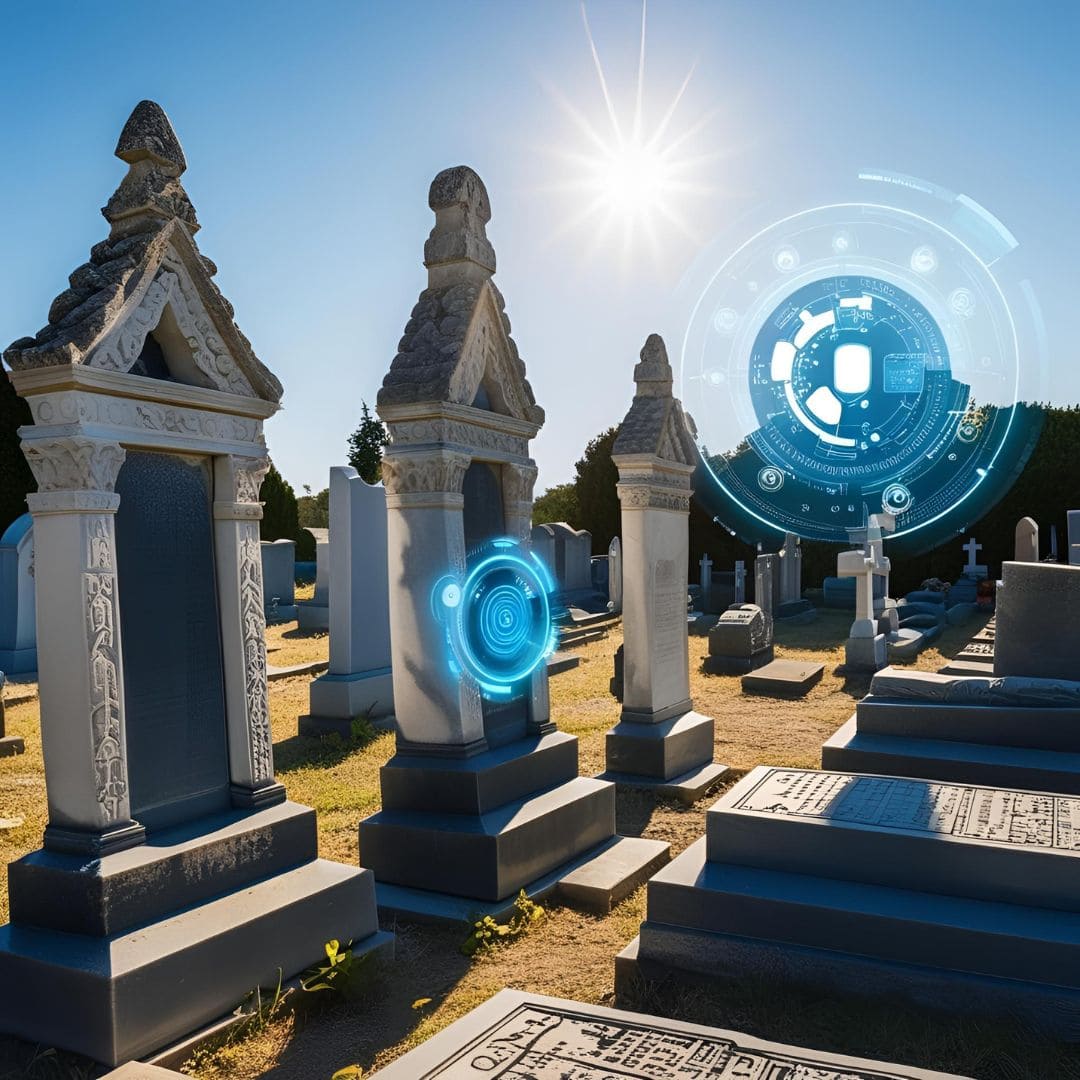Historic cemeteries are often seen simply as resting places, but they are also rich repositories of history, culture, and memory. From historical figures to significant events, these places hold many secrets and stories that help connect past and future generations. In recent years, Artificial Intelligence (AI) has played a transformative role in preserving these cultural landmarks and enhancing tourist experiences. Innovative technologies are providing new ways to explore and learn about historic cemeteries, allowing newer generations to connect with history in an interactive and engaging way.
The impact of AI goes beyond merely improving tourist visits. By using technologies like machine learning algorithms, pattern recognition, and augmented reality, AI is shaping how we explore historic cemeteries. These technologies not only enhance people’s understanding of the events and individuals buried there but also help preserve these sites for future generations.
How AI is Transforming Visits to Historic Cemeteries
AI technology has the power to transform the way visitors interact with historic cemeteries. Rather than simply observing tombstones and reading superficial information, tourists can now enjoy an immersive and personalized experience that brings history to life interactively.
Intelligent Tour Guides
One of the most significant ways AI impacts cultural tourism in historic cemeteries is through intelligent tour guides. These AI-based guides are apps and devices that provide detailed information about the sites visited. Using advanced algorithms and historical data, the intelligent guides offer personalized narratives about the people buried in the cemetery, telling stories of their lives, historical events, and even unsolved mysteries.
In some cases, these tools include augmented reality (AR) elements, allowing visitors to see interactive projections of historical figures next to their tombs. This not only makes the visit more interesting but also provides deeper context about these figures’ contributions to society and historical events.
Data Analysis and Personalizing the Experience
In addition to tour guides, AI is also being used to analyze large volumes of data and create personalized experiences for visitors. Machine learning algorithms can identify patterns in tourists’ interests, suggesting specific locations within a historic cemetery based on their previous visits or personal preferences. For instance, if a visitor has a particular interest in literary figures, the system can recommend visiting the graves of famous writers or places related to significant literary events.
This personalization increases the relevance of information for each visitor, making the experience more satisfying and memorable.
Preserving Cultural Heritage with AI
Historic cemeteries, like any ancient structure, are subject to the wear and tear of time. Tombstones and inscriptions can deteriorate due to weather conditions, pollution, and the simple passage of time. This represents a significant risk to the preservation of crucial information that could help us better understand the past.
AI has proven to be a powerful tool in preserving cultural heritage, offering innovative solutions to restore and conserve these sites. One of the most impactful ways is through digitization and restoration of old images and inscriptions.
Digital Restoration of Inscriptions
AI algorithms and deep learning are capable of digitally restoring damaged inscriptions and texts on tombstones, allowing historians, archaeologists, and the public to access information that might have been lost. The technology can enhance images of engravings by removing imperfections and reconstructing words and letters that have faded over time. This process helps preserve historical records without the need for physical manipulation of the graves, which could lead to irreparable damage.
Furthermore, digital images of the tombstones can be shared and stored in databases, providing easy access for researchers and the public, facilitating the study of historic cemeteries on a global level.
Mapping and Historical Maps
AI can also be used to create interactive maps of ancient cemeteries, digitizing and preserving their historical layouts. These digital maps can allow tourists to explore cemeteries more efficiently and educationally, highlighting significant locations and providing detailed information about each one.
Additionally, AI algorithms are used to create historical maps that show how cemeteries were organized over time. This technology can track changes in the cemetery, such as new graves and changes in the land, offering a visual timeline that tells the evolution of the site.
AI and Connecting Generations with History
Cultural tourism in historic cemeteries is not just about the present but also about how new generations connect with the past. AI is playing a key role in creating more accessible and engaging experiences that allow both young and adult visitors to explore historical legacies in a more interesting and approachable way.
Virtual and Augmented Reality
One of the most impressive innovations brought by AI to cultural tourism is virtual reality (VR) and augmented reality (AR). These technologies allow tourists to explore historic cemeteries from home, creating immersive experiences that simulate visits to iconic sites. Using VR headsets or AR-enabled mobile devices, users can walk through the cemetery paths, view tombstones, and interact with historical projections.
These tools are especially useful for schools, universities, and educational groups wishing to provide a unique learning experience about history and culture. Additionally, they offer a way to relive historical moments, such as uncovering important events or recreating scenes from the lives of famous figures, directly within the cemetery setting.
Interacting with the Past
AI also has the ability to bring historical figures back to life, allowing people to interact with “characters” from the past. AI-based applications can recreate dialogues and retell stories in the first person, giving visitors the feeling that they are conversing with the very historical figures buried in the cemetery. These “historical chatbots” can answer questions about the lives and times of these figures, offering a new and exciting way to learn about history.
The Future of Cultural Tourism with AI
As technology continues to advance, we can expect AI to have an even greater impact on cultural tourism. Future innovations may include even more immersive experiences, with AI creating realistic representations of historical events directly in burial sites. AI could also facilitate genetic research to discover familial relationships among those buried, thus creating a more personal connection to the history.
Moreover, the growing popularity of virtual tourism platforms could allow more people around the world to explore historic cemeteries without the need for physical travel. This could democratize access to these sites, allowing anyone, anywhere, to learn about global cultural heritage.
Artificial intelligence is shaping the future of cultural tourism in historic cemeteries, not only enriching the visitor experience but also preserving and restoring our cultural heritage. AI is creating new ways to explore the past, connect generations with history, and protect these valuable sites for future generations. The interaction between past and future has never been more accessible and engaging, and AI is transforming the way we understand and appreciate historic cemeteries.








